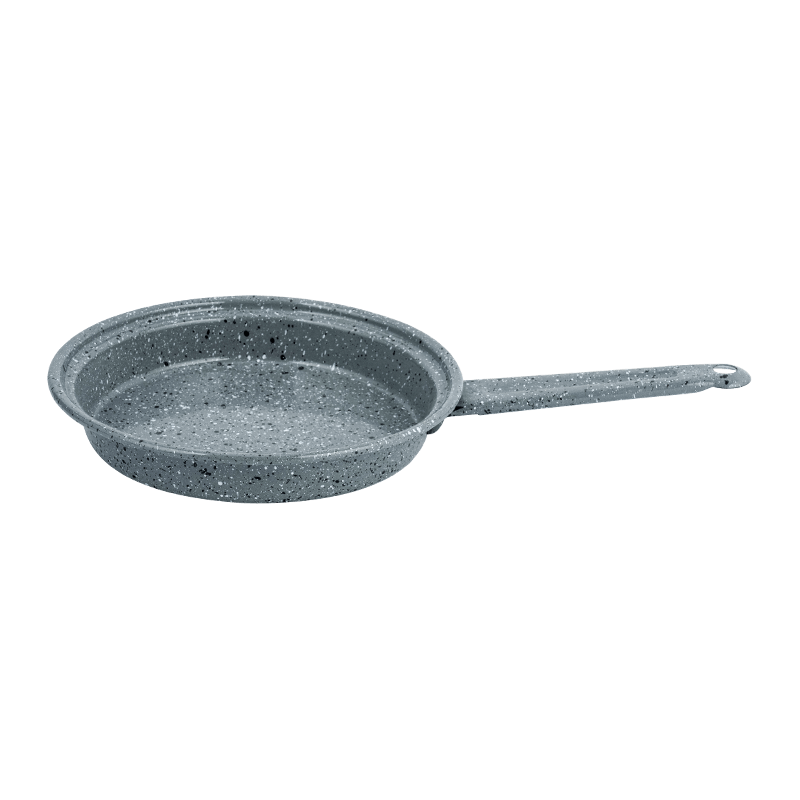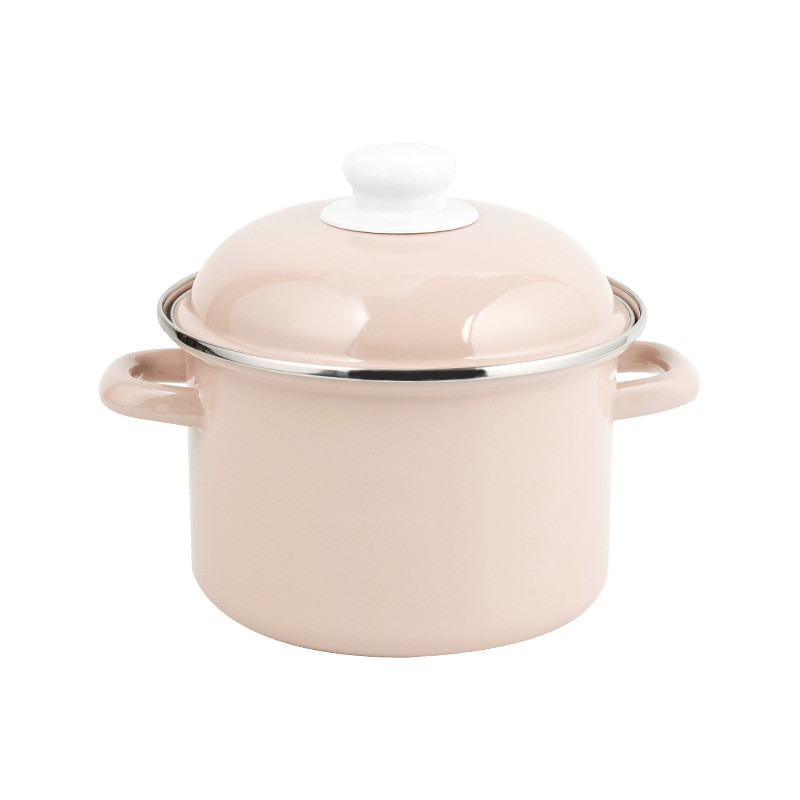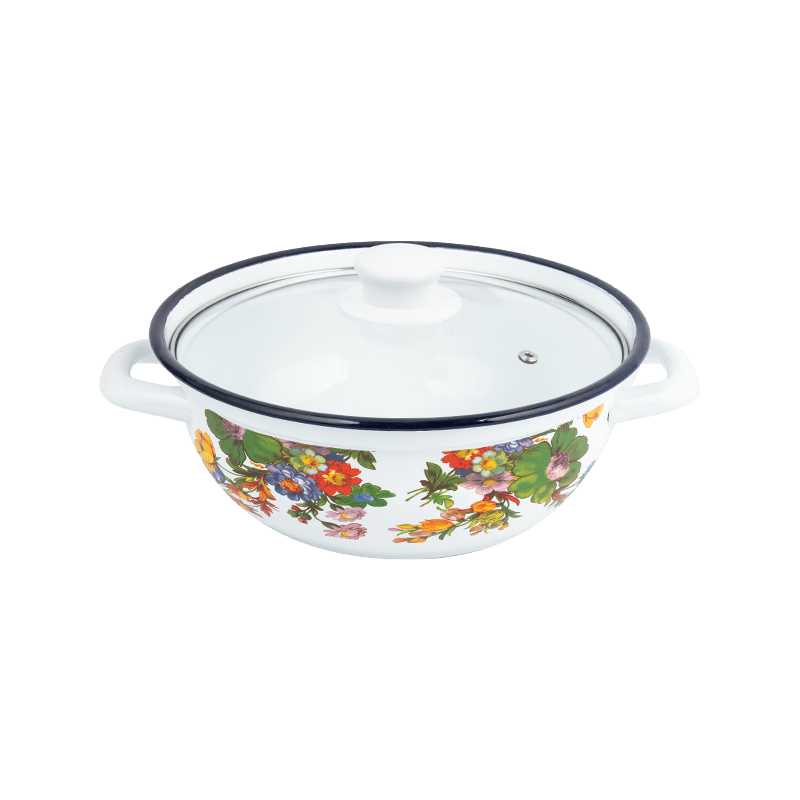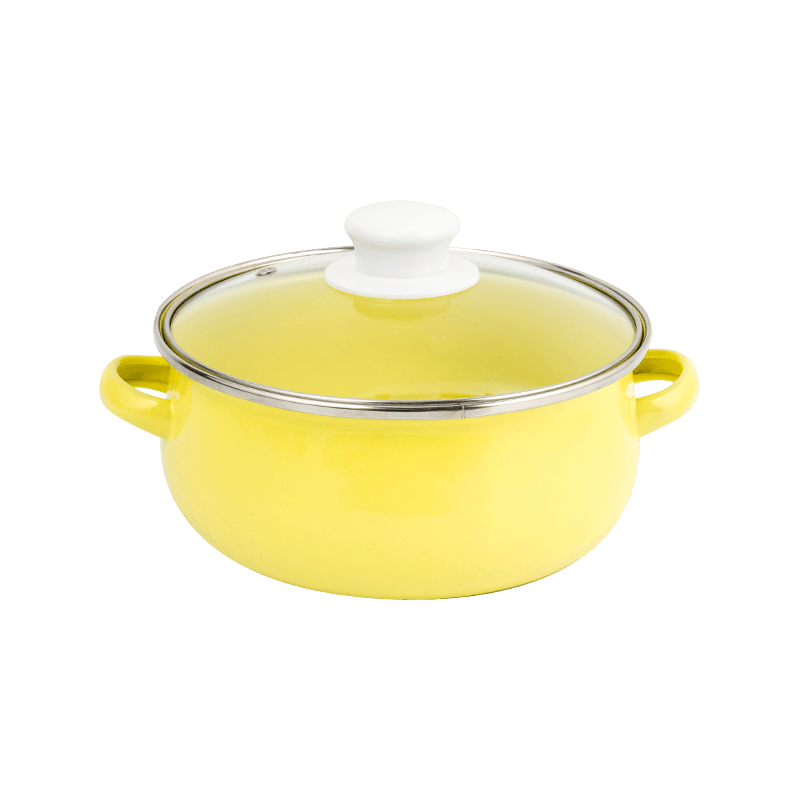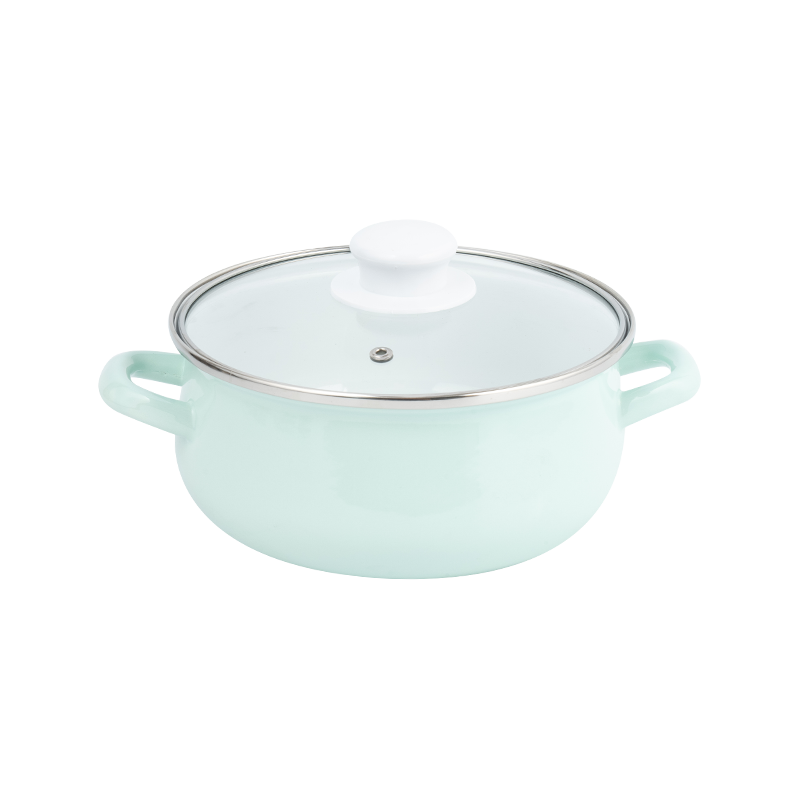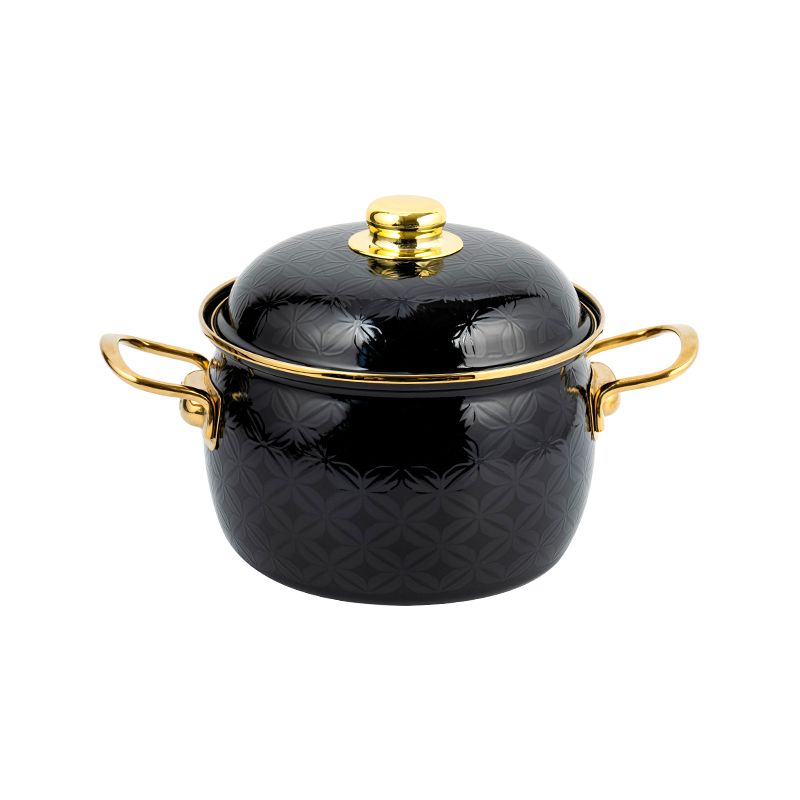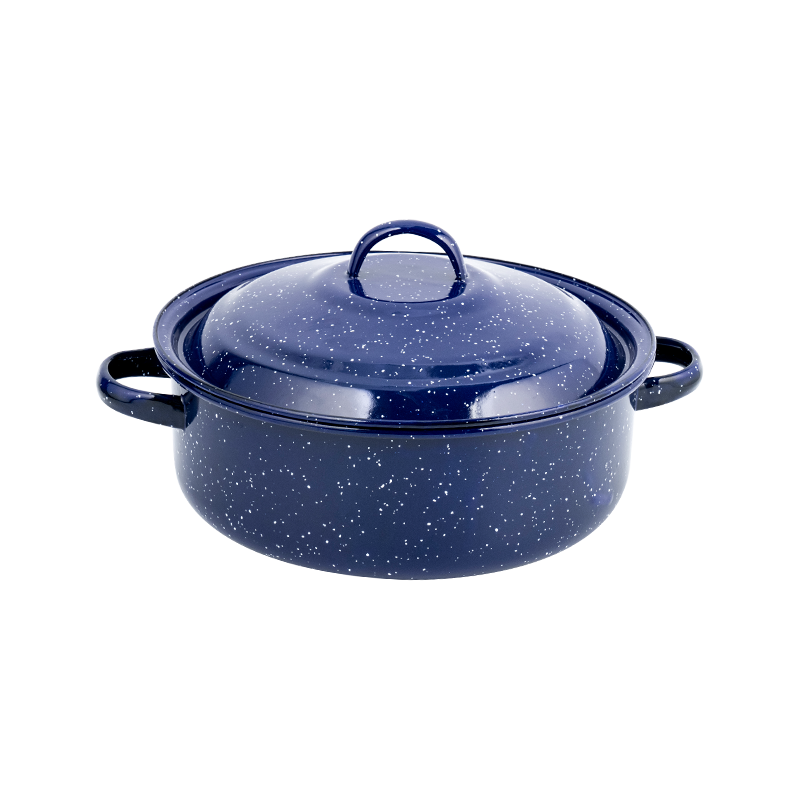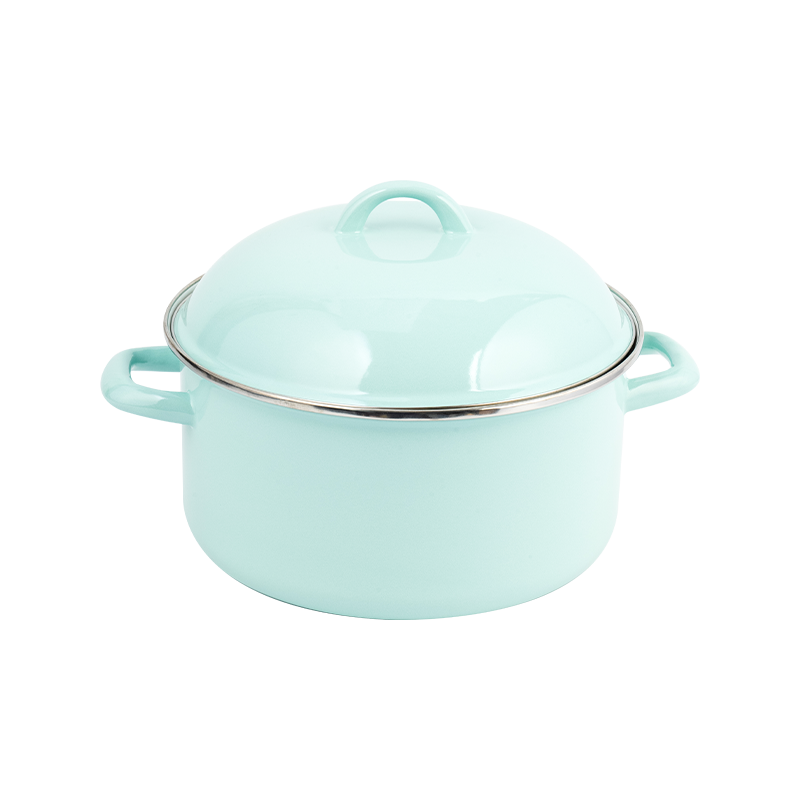As home cooking evolves, many enthusiasts find themselves asking whether their trusty double handle enamel pot can safely transition from stovetop to oven. This common kitchen query isn't just about convenience—it can impact safety and the longevity of your cookware. Here's a professional, fact-based guide to help you navigate this decision without exaggeration or brand endorsements.
First, understand what enamel pots entail. Enamel-coated cookware, typically made from cast iron or steel, features a glass-like finish that resists stains and corrosion. The double handles enhance grip and stability, making them popular for heavy-duty tasks. While enamel itself is generally heat-resistant and can withstand oven temperatures up to 450°F (232°C) or higher, the deal-breaker often lies in the handles. Most double handle designs incorporate materials like plastic, silicone, or wood for comfort, but these components may not be oven-safe. Exposing non-heat-resistant handles to high heat can lead to melting, warping, or even fire hazards.
To determine if your specific pot is oven-ready, follow this step-by-step guide. Start by consulting the manufacturer's instructions, which should clearly state temperature limits and oven compatibility—this is the most reliable source. If that information is unavailable, inspect the handles closely. Metal handles (e.g., stainless steel) are usually safe for oven use, but if they feel like plastic or have visible coatings, they likely have temperature restrictions. Next, check for any visible labels or engravings on the pot itself; phrases like "oven-safe" or temperature ratings are key indicators. As a general rule, avoid placing any pot with non-metal handles in the oven, regardless of how tempting it might be for braising or baking dishes. Instead, transfer food to an oven-safe dish if needed to prevent damage or accidents.
Safety cannot be overstated. Even if enamel resists heat well, exceeding recommended temperatures can cause cracking or discoloration. Always preheat your oven gradually and never exceed 500°F (260°C) unless specified otherwise. For double handle pots, focus on protecting the handles: remove any detachable parts if possible, and never place the pot under a broiler, where intense direct heat increases risks. If your pot isn't oven-safe, alternatives like stovetop-to-oven transition methods (e.g., finishing dishes on the stovetop) can achieve similar results without compromise.

 English
English 中文简体
中文简体




